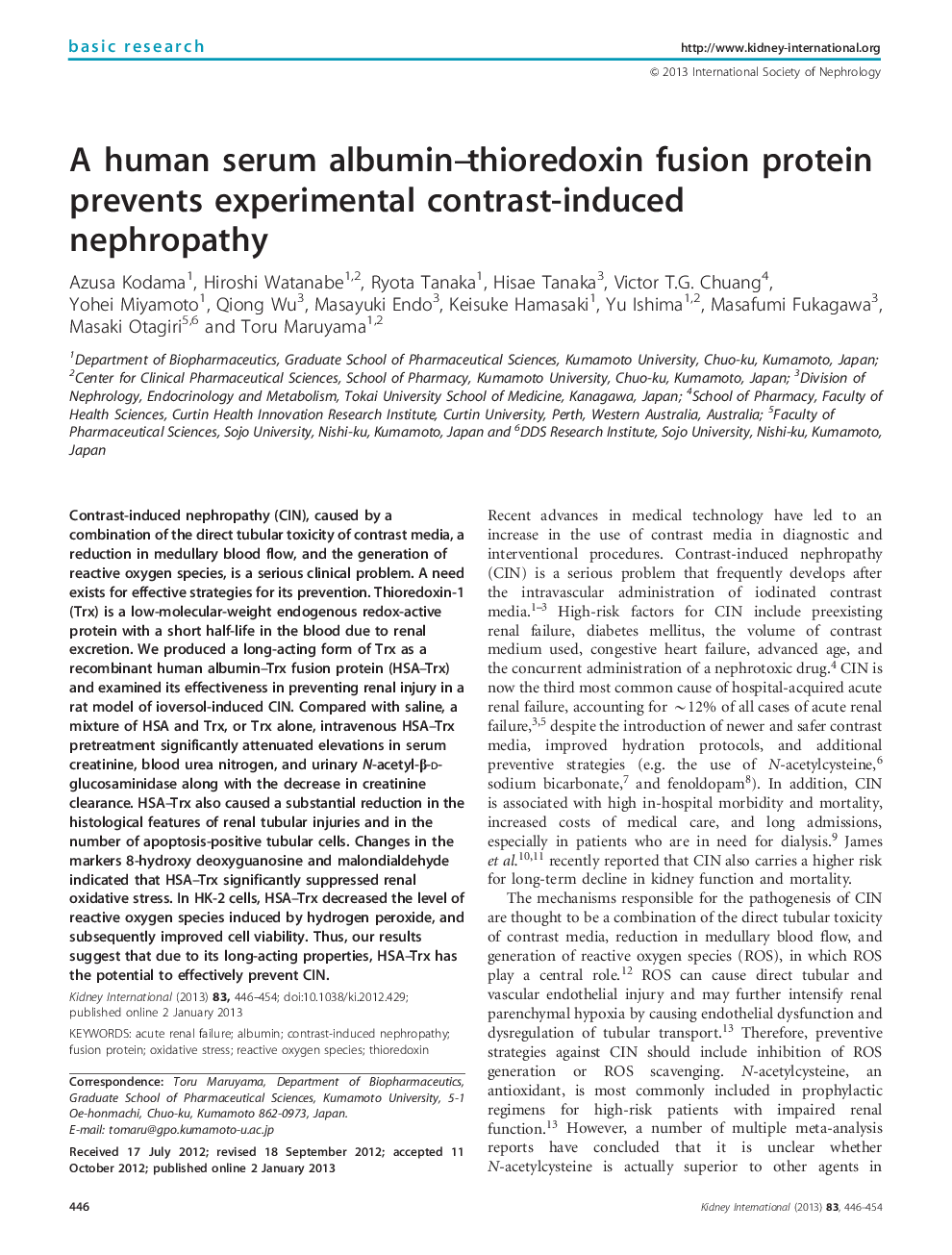| Article ID | Journal | Published Year | Pages | File Type |
|---|---|---|---|---|
| 6161268 | Kidney International | 2013 | 9 Pages |
Contrast-induced nephropathy (CIN), caused by a combination of the direct tubular toxicity of contrast media, a reduction in medullary blood flow, and the generation of reactive oxygen species, is a serious clinical problem. A need exists for effective strategies for its prevention. Thioredoxin-1 (Trx) is a low-molecular-weight endogenous redox-active protein with a short half-life in the blood due to renal excretion. We produced a long-acting form of Trx as a recombinant human albumin-Trx fusion protein (HSA-Trx) and examined its effectiveness in preventing renal injury in a rat model of ioversol-induced CIN. Compared with saline, a mixture of HSA and Trx, or Trx alone, intravenous HSA-Trx pretreatment significantly attenuated elevations in serum creatinine, blood urea nitrogen, and urinary N-acetyl-β-D-glucosaminidase along with the decrease in creatinine clearance. HSA-Trx also caused a substantial reduction in the histological features of renal tubular injuries and in the number of apoptosis-positive tubular cells. Changes in the markers 8-hydroxy deoxyguanosine and malondialdehyde indicated that HSA-Trx significantly suppressed renal oxidative stress. In HK-2 cells, HSA-Trx decreased the level of reactive oxygen species induced by hydrogen peroxide, and subsequently improved cell viability. Thus, our results suggest that due to its long-acting properties, HSA-Trx has the potential to effectively prevent CIN.
